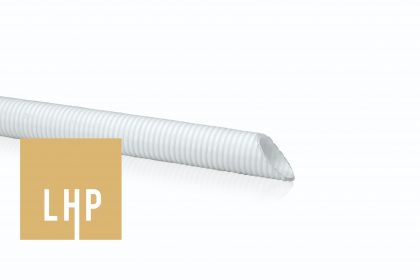Flexible plastic ducts systems

Ducts has very strong impact on the work of the recuperator. The air velocity in the ducts must not exceed 4 m/s. Incorrect selection of duct diameter may increase electrical consumption, noise level. The efficiency is also determined by the duct parameters, what pressure losses occur in the pipeline, so the ducts must be designed as short as possible, with a few elbows to avoid heat loss. Ducts installed in unheated rooms must be well insulated. It is necessary to use gaskets to seal the ducts to prevent dust and other contaminants from entering the ducts. Diffuser boxes must also be sealed to prevent dust and contaminants from entering the ventilation system during construction and interior finishing work.
Flexible air ducts supplied by UAB “LHP LT” are corrugated externally, with an antistatic, antibacterial coating, white, inside / outside – 63 / 75mm, internal waviness – 5%,> 450N, minimum bending – 225mm. The duct is certified as 100% antibacterial.
It is very important to evaluate the pressure loss in the ducts when designing the ventilation system, as this affects the operation of the ventilation system: as the pressure loss increases, the ducts becomes longer, the maximum air flow of the recuperator decreases.
Let’s say that you have RDCD50SH recuperator with an air flow of 370 m3/h at a pressure loss of 100Pa. If the feed or extraction pipeline is 100m, the pressure loss with the MVD75 ducts is 233Pa because the pressure loss is 2,33 Pa/1m at 3m/s. The recuperator airflow (as shown in graph) is 350 m3/h, but if using, for example, Polish ducts with 375Pa resulting in a pressure loss of 3,75Pa/1m, the airflow of the recuperator may fall due to air velocity of 3 m/s up to 260 m3/h.


 EN
EN  LT
LT 

